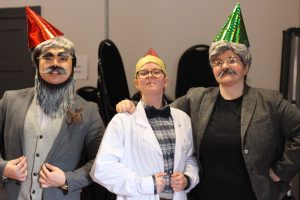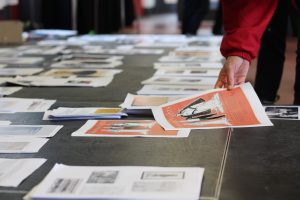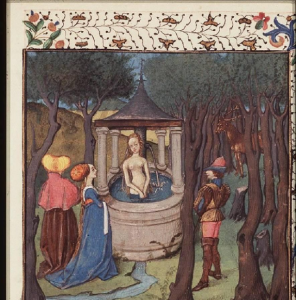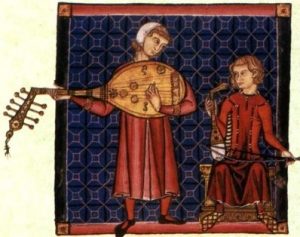During the first workshop that kickstarted the ‘Transformations’ workshops series, we travelled back in time and explored texts, images, narratives, photographs and artwork from the Classical, Medieval and Modern periods.

Exeter researchers embodying early 20th century sex researchers!
Our workshop began with our ‘Meet the Sexologists’ session in which participants were able to “meet” early 20th century sex researchers Magnus Hirschfeld, who opened the first institute for sex research in Berlin and worked with queer, trans and gender diverse communities, Eugen Steinach, who pioneered the science of hormones, and Richard Goldschmidt, a geneticist who studied butterflies and coined the term “intersex”. We asked these historical figures questions about their work and the young people suggested new areas of research that they wanted to pursue to gain a better understanding of gender and sexuality!

Exploring the historical materials
We also explored ‘transformations’ in Classical and Medieval stories, grappling with materials about gender from the more distant past. These are narratives in which people spontaneously transformed ‘from male to female’ or vice versa that illustrate the prevalence of gender diversity and fluidity in the imaginations of people in far distant periods of history. We discussed the possible functions of these stories: as reflections of reality, or as having fantastical, religious or educational purposes.
One of the stories we looked at was the ancient story of Herais/Diophantus, who was assigned female at birth, lived as an adult woman and got married to a man. One day when their* husband was away, Herais woke to find a lump which became inflamed. The doctors didn’t know what had happened to Herais. On the seventh day of this mystery, the surface of the lump burst, and male genitals appeared. Herais began to dress ‘as a man’, changed their name to Diophantus, and also underwent surgery on their new male genitals to, as the text tells us, make them “a decent shape”. Finally, Diophantus joined Alexander the Great’s army.
*the text uses female pronouns throughout.
This story and others we explored, such as the Roman poet Ovid’s account of the story of Iphis and Ianthe, sparked interesting conversations about the connections between bodily transformations, both spontaneous and medical – and ancient perceptions of gender. We also discussed which other social markers of gender were, and were not included, in the texts, such as clothes, names and pronouns. Some of the participants suggested that Herais may be an intersex character, and also, because once living as a man they embarked on a journey to fight for Alexander the Great, the group suggested this was an empowering narrative of a gender diverse person living in the past.
We also discussed another story of physical transformation, Blanchandrine and Clarinde: a story that exists in a 14th Century French Manuscript but is likely to have shared elements with other stories circulating in the medieval period. This tale was described by one of the participants as a “Medieval Queer Hollyoaks”!


We explored lots of images from the middle ages…to think about medieval ideas of gender.
This was later followed by talks and discussions from, and with, our fantastic speakers: Dr Ruth Pearce, a leading expert on trans health who is currently researching trans pregnancy, and Professor Allan Pacey, an andrologist who has worked with trans people to give advice on fertility.
Look out for future posts on the other Transformations workshops!
